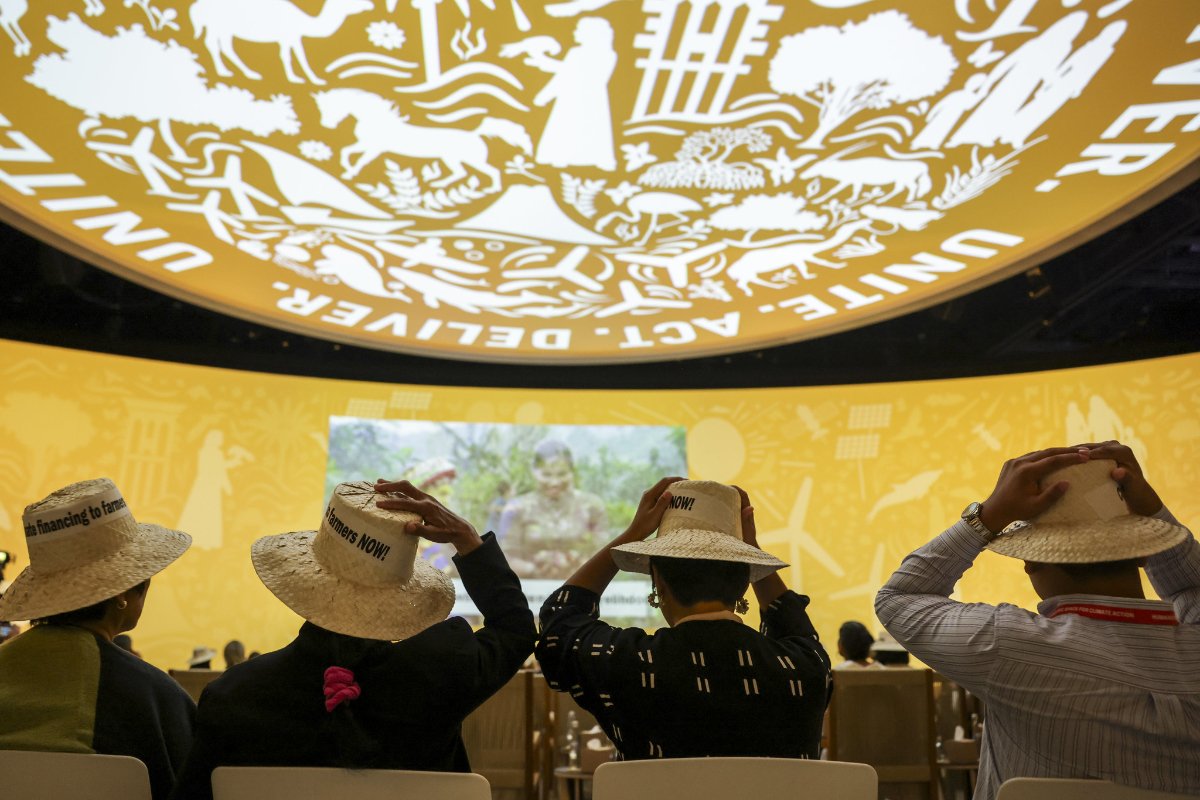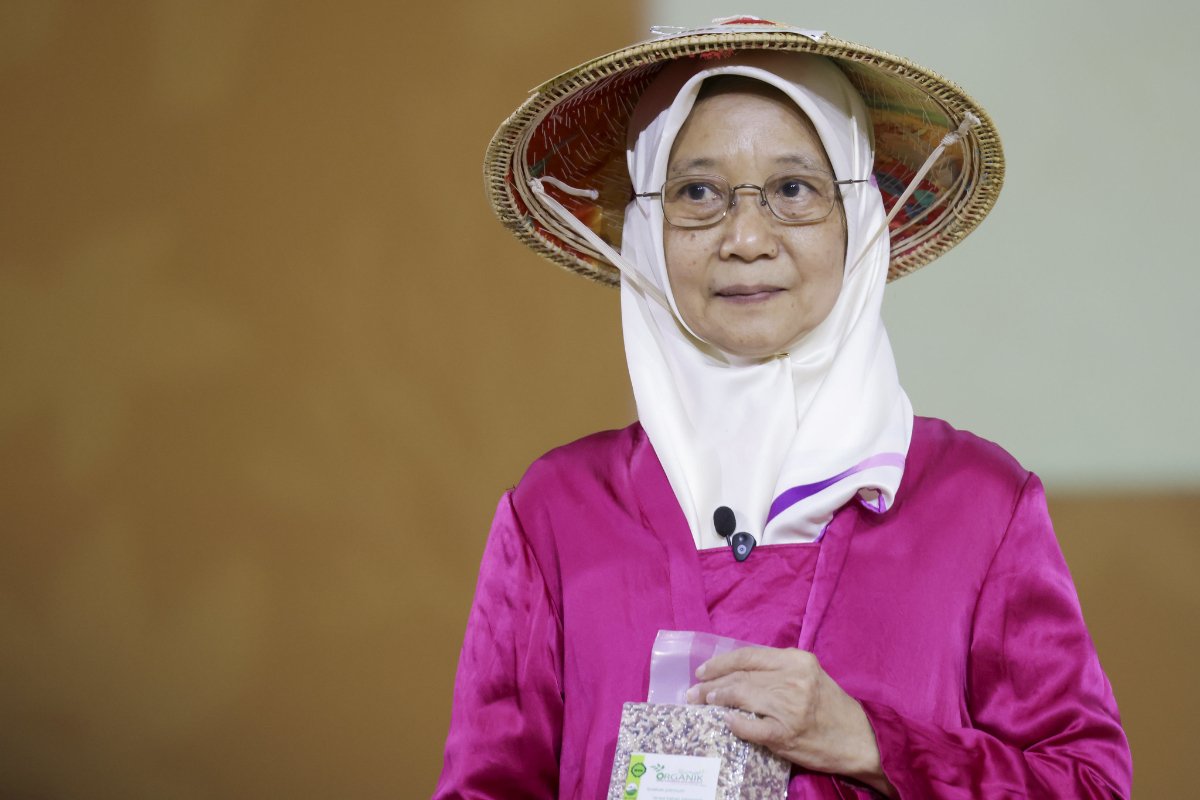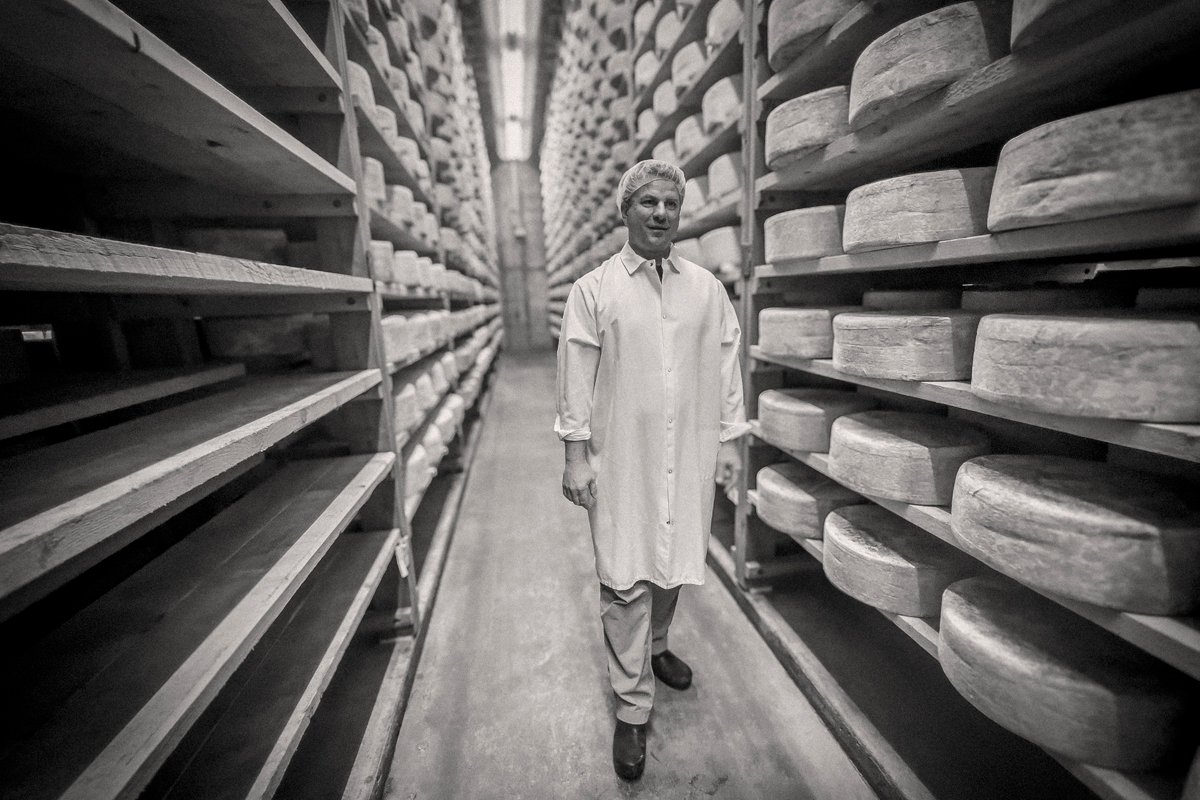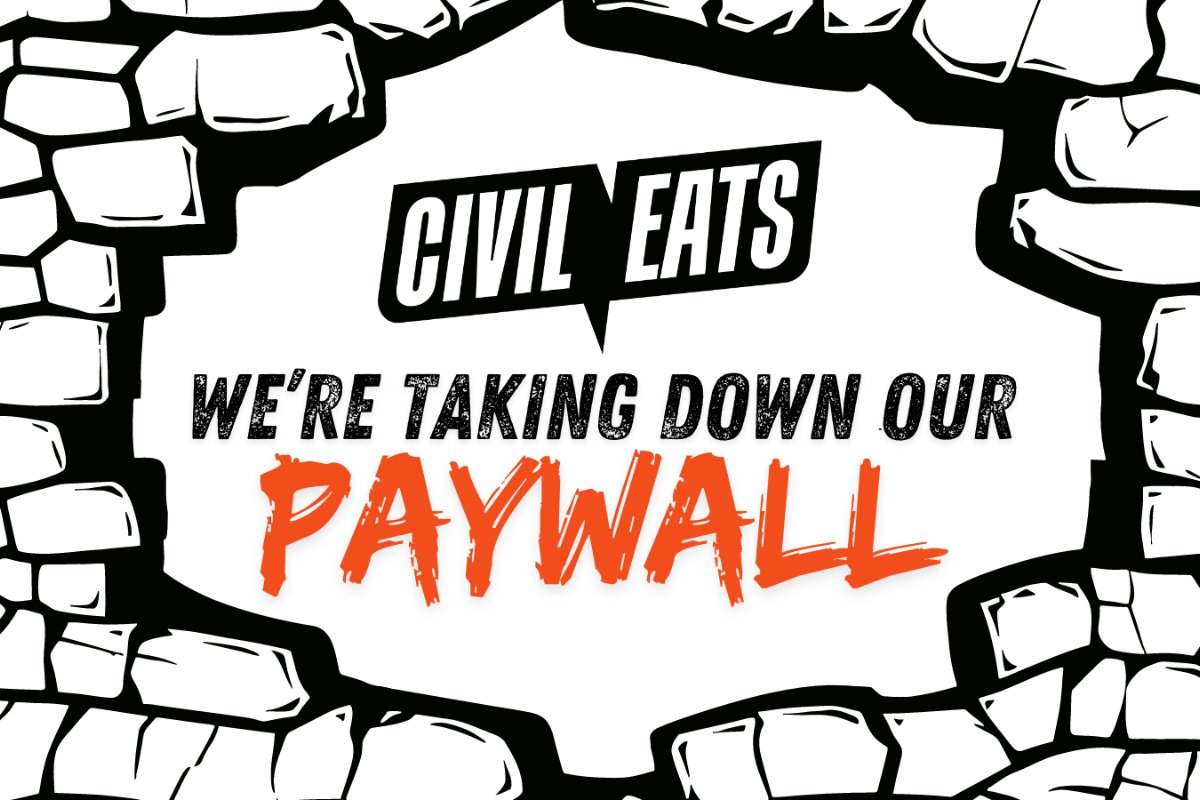In this week’s The Field Report: The underwhelming outcome of the latest climate talks, the latest on the delayed farm bill, and more.

In this week’s The Field Report: The underwhelming outcome of the latest climate talks, the latest on the delayed farm bill, and more.
December 12, 2023

Participants at the UN COP28 Climate Summit during a session on farmers and traditional producers. (Photo CC-licensed by the UNFCCC)
Update: Twelve hours after we published this article, global leaders at COP28 reached an agreement to “transition away” from fossil fuels that did not include the food system. “Ignoring the one-third of greenhouse gas emissions from food systems is a dangerous oversight,” said Emile Frison, IPES-Food panel expert, in a statement. “We cannot afford another lost year for food and climate action.”
The global food system, a major driver of the climate crisis, was given a prominent place on the stage at the 2023 United Nations Climate Conference, which is set to conclude today, with negotiations continuing into overtime. Known as COP28, the event brought over 90,000 registered delegates to Dubai as world leaders there have worked to shape the global response to the escalating climate crisis.
On the first day of the gathering, delegates from 152 countries signed a global declaration for food systems transformation. And for the first time in its history, the conference devoted an entire day to food, agriculture, and water.
In opening remarks that day, Susan Gardner, director of the U.N.’s ecosystems division, highlighted the dangerous cycle of unsustainable agriculture. “Let’s be clear: we know our current food systems are broken,” she said. “Agriculture alone is responsible for 60 percent of biodiversity loss. It generates about a third of greenhouse gas emissions globally.”
However, food and agriculture won’t likely get much airtime in the much-debated Global Stocktake, the key document resulting from the conference’s negotiations. The stocktake represents an important juncture in international climate negotiations, and has been described by the U.N. as “taking an inventory” of global climate progress. And despite much discussion of food systems, the draft agreement only makes a passing reference to food.
Much of the attention over the last two days has gone to the removal of language about a fossil fuel phaseout in the draft, but questions also remain about why food systems were largely left out of the agreement. And it’s clear that the negotiations didn’t occur in a vacuum. Three hundred and forty agribusiness lobbyists—a record number—attended the conference, and most where from the meat and dairy industry, according to an analysis by The Guardian and DeSmog.
While most lobbyists came as observers, over 100 gained access to the negotiations designated as “country delegates.” Delegates representing the industry-funded Global Meat Alliance attended with the explicit goal of positioning meat as beneficial to the environment.
Representatives from Bayer and CropLife America, the pesticide trade group, were also present as sponsors of the Sustainable Agriculture of the Americans pavilion.
As negotiations drew to a close, some advocates did push to include more language about food systems in the Global Stocktake. On December 8, over 120 civil society organizations, and even some corporations, sent a letter expressing “significant concern over the omission of agriculture and food system” from the draft. “The current draft is a far cry from what is needed,” reads the letter, which points out that the parties repeatedly addressed the food system throughout the process leading up to the agreement’s draft.
The U.N. also released a roadmap this weekend that lays out how to transform the food sector to curb greenhouse gas emissions. The document sets new benchmarks, including cutting methane emissions by 25 percent by 2030.
It also lays out pathways for livestock, fisheries and aquaculture, and crops and advises that “initiatives target regenerative farm practices, sustainable land management, freshwater management, advanced irrigation technologies, remote sensing utilization, inclusive governance, and coherent policies to protect land rights and improve water-pricing policies towards sustainable resource use.”
But those messages do not carry the authority of the Gobal Stocktake, which is a more formal pathway for achieving the binding targets of the Paris Agreement.

Bibong Widyarti, Council Member Inofo of Indonesia speaks during the UN Climate Change Conference COP28 in Dubai, United Arab Emirates. (CC-licensed photo by Christophe Viseux, COP28)
“Never before have we seen food systems on the climate agenda like at this COP. It is an unprecedented achievement,” said Gonzalo Muñoz, the U.N. Climate Change High-Level Champion for COP28, in a speech on the food system day. “However, there is still a huge gap in translating these intentions into action.”
Aiming to narrow this gap, on December 10th, Muñoz led the development of a manifesto calling for the urgent need to transform food systems, especially by supporting and directly financing the knowledge of small producers and Indigenous people. The manifesto also calls for an agreed upon set of global targets. It has since been signed by over 200 non-state actors— rom farmers and fishers to businesses, cities, civil society, consumers and all those engaged in food systems—who are hoping that governments will support those who have long tended to the earth.
In total, COP28 has resulted in pledges of more than $7.8 billion in funding for climate action in the food sector, according to the conference’s organizers. Yet it’s unclear how much of this funding will reach small-scale producers or Indigenous people.
“We are not sure if we will be able to directly access this climate finance that has been announced,” said Estrella Penunia, the secretary general of the Asian Farmers’ Association (AFA), in an interview with Civil Eats. “We [have] a lot of solutions to adapt to climate change with mitigation potentials, and we need support.”
For instance, Penunia pointed to how in her home country of the Philippines, farmers grow rice with ducks who fertilize the soil, an integrated system promoted by the U.N.’s Food and Agricultural Organization (FAO). Yet the ingenuity and knowledge of small farmers—including AFA’s 13 million-plus farmers, fishers, and Indigenous peoples—is often overlooked.
While growing more than a third of the world’s food, small producers receive just 0.3 percent of international climate financing, according to AFA’s analysis released prior to COP28.
Penunia also expressed skepticism about the World Bank’s announcement last week that it funds carbon markets in 15 countries to preserve forests. She cautioned about the potential for carbon markets to be an “excuse to not to reduce greenhouse gas emissions” by cutting fossil fuels. Beyond that, she wants Indigenous people and small farmers to have as much agency as possible within the carbon markets on their land.
“We want to innovate. We don’t want to be passive recipients of technology, including how to count carbon,” Penunia told Civil Eats. “We want to have direct control and ownership over the technologies we are implementing.”
Monica Ndoen, an Indigenous leader from Rote, Indonesia, also expressed the need for directly funding Indigenous peoples to steward biodiversity. “If you really want to support Indigenous peoples and responsible sourcing initiatives on the ground, it has to be direct climate finance, not going through institutions or NGOs,” she told Civil Eats.
She points to the fact that only 7 percent of the $1.7 billion pledged at COP26 in 2021 to Indigenous peoples and local communities actually made it to the intended recipients.
Meanwhile, U.S. Agriculture Secretary Tom Vilsack, who attended COP28 last week, isn’t too troubled that agriculture will be left out of the UN’s final agreement, as he seems to believe that U.S. farmers are already doing enough. “We flipped the script for American agriculture” he said on a recent call with reporters, referring to the agency’s Partnership for Climate-Smart Commodities and other voluntary programs that have yet to show clear results when it comes to reducing greenhouse gas emissions.
Read more:
Will a Food and Ag Focus at COP28 Distract From the Fossil Fuel Economy?
Op-ed: Big Ag Touts Its Climate Strengths, While Awash in Fossil Fuels
The 2023 Farm Bill extended: The U.S. faces food security and agriculture funding challenges as the next farm bill, the massive, trillion-dollar legislative package that shapes the entire food system—from nutritional benefits to crop insurance—remains in limbo. The 2018 Farm Bill expired in September, and was extended for another year. A recent report from the Government Accountability Office (GAO) points to where the next farm bill could be cut: the Federal Crop Insurance Program. In 2022, the USDA subsidized 62 percent of farmers’ insurance premiums, totaling $12 billion. The report suggests reducing the subsidies for high-income farmers, while lowering payments to the private insurance companies which offer the federal program, to save millions.
“This report highlights the simple fact that by establishing modest payment limits, we can save money while helping small farmers and ranchers who are short-changed or left out of the crop insurance program altogether,” Representative Earl Blumenauer (D-Oregon), said in a statement to Civil Eats.
Meanwhile federal funding for the Women, Infants, and Children (WIC) nutrition is only allocated through until January 19. WIC’s administrators fear that they may have to turn away mothers and children. Nearly 13 percent of U.S. households were food insecure in 2022, according to the USDA.
Read more:
The Farm Bill Really Matters. We Explain Why.
Former Snap Recipients Call for Expanded Benefits in the Next Farm Bill
How Crop Insurance Prevents Some Farmers from Adapting to Climate Change
Food Loss and Waste: Earlier this month, the USDA, the Food and Drug Administration (FDA), and Environmental Protection Agency (EPA) released a joint draft of a national strategy aimed at reducing food loss and waste, while increasing organics recycling. The draft was announced at COP28 as part of the Biden administration’s target of halving food waste by 2030, a goal that reflects the Paris Agreement’s commitments. Yet there is still a long way to go; recent EPA research shows methane emissions are increasing from landfilled food waste. The U.N.’s food systems roadmap also lays out strong recommendations for cutting methane emissions quickly.
Read more:
Supermarket Food Waste is a Big Problem. Are Strategic Price Cuts the Solution?
These Manure Digesters Incorporate Food Scraps. Does That Make Them better?

September 4, 2024
By paying top dollar for milk and sourcing within 15 miles of its creamery, Jasper Hill supports an entire community.
September 3, 2024

August 27, 2024

August 26, 2024

Like the story?
Join the conversation.